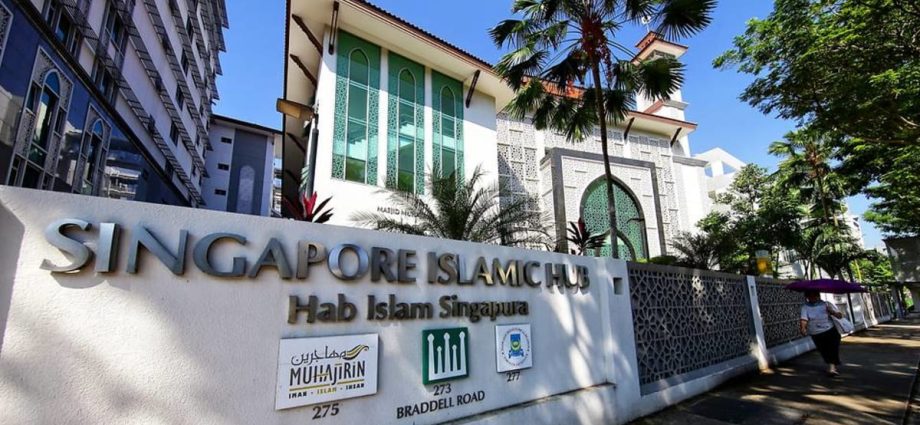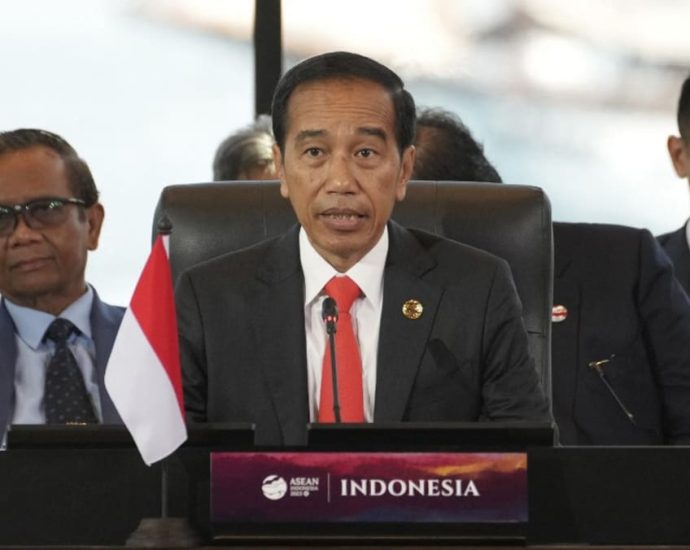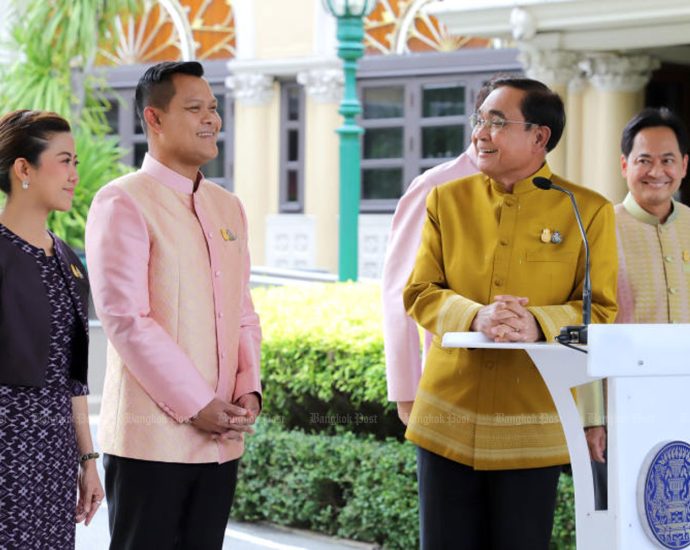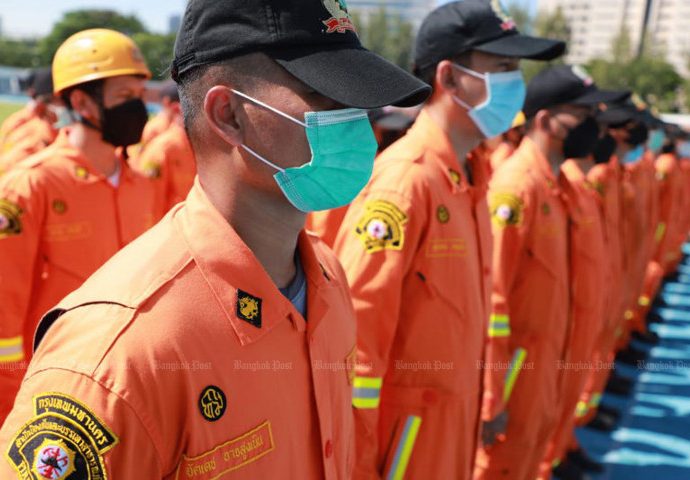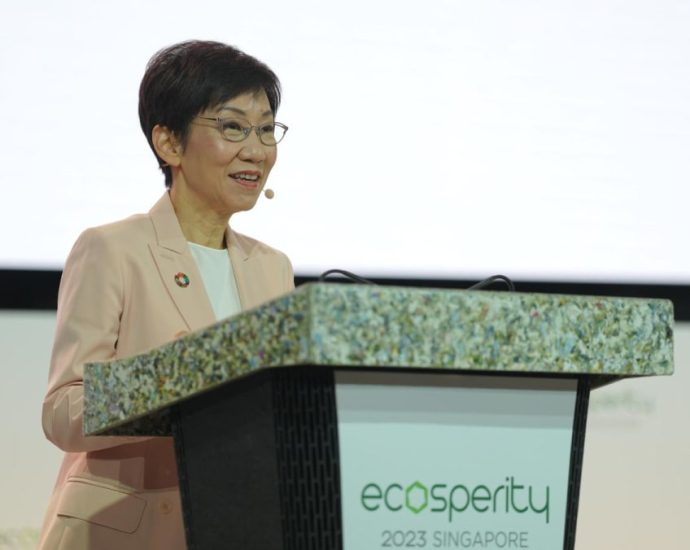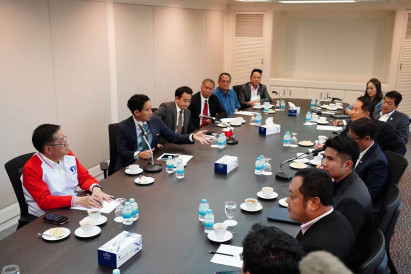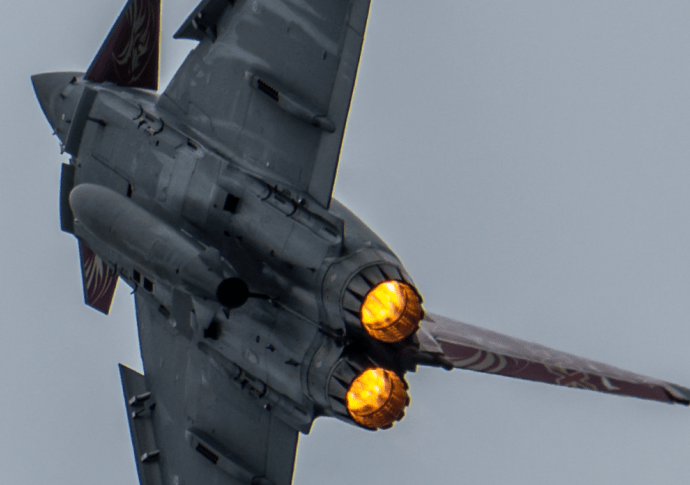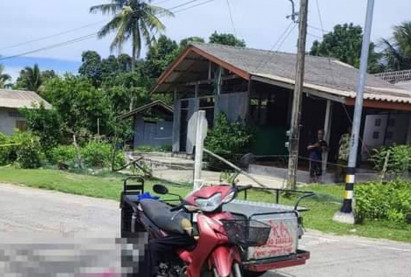Warning letter to religious teacher was over inflammatory language, not LGBT stance: Islamic regulatory bodies
SINGAPORE: A warning letter was issued to a religious teacher who used inappropriate and inflammatory language to incite hatred and disrespect towards members of the LGBTQ (lesbian, gay, bisexual, transgender and queer) community, said the Islamic Religious Council of Singapore (MUIS) and the Asatizah Recognition Board (ARB). The joint media statement by theContinue Reading
Thailand’s Pita confident of surviving move to thwart his PM bid
BANGKOK: Thailand’s prime ministerial frontrunner Pita Limjaroenrat played down an effort to disqualify him over a stock ownership issue on Tuesday (Jun 6), insisting he violated no rules and that rivals were determined to keep him from the top job. Buoyed by massive youth support behind its anti-establishment, anti-monopoly agenda,Continue Reading
Indonesian President Joko Widodo to deliver address at Temasek sustainability event in Singapore
SINGAPORE: Indonesian President Joko Widodo will visit Singapore on Wednesday (Jun 7) to give a speech at Temasek’s Ecosperity Week, the Ministry of Foreign Affairs (MFA) said on Tuesday. He will be accompanied on his trip by first lady Iriana Joko Widodo and members of his Cabinet. “Prime Minister LeeContinue Reading
Activists want PM investigated over anti-torture law delay
Anti-graft body should hold Prayut and ministers accountable after charter court ruling, say rights groups

Civil society groups have asked the National Anti-Corruption Commission (NACC) to investigate Prime Minister Prayut Chan-o-cha and his cabinet over the postponement of the anti-torture law.
Led by the Institute for Justice Reform (IJR) and a support group for relatives of the Black May 1992 victims, they said Gen Prayut and the cabinet should be held accountable for damage caused by the delayed enforcement following the Constitutional Court ruling.
The groups said the Prayut government deliberately violated the charter when it issued an executive decree postponing enforcement of Sections 22–25 of the Prevention and Suppression of Torture and Enforced Disappearance Act.
The anti-graft agency should launch an investigation against Gen Prayut and the cabinet under Section 235 of the charter and submit its findings to the Supreme Court’s Criminal Division for Holders of Political Positions, according to the groups.
The complaint came after the Constitutional Court ruled last month that the executive decree postponing enforcement of the four sections was a breach of Section 172 of the charter. With the court ruling, the anti-torture law came into force in its entirety on Feb 22 this year.
Pol Col Wirut Sirisawasdibut, secretary-general of the IJR, said that the postponement of the essential law undermined enforcement and Gen Prayut and the cabinet should be held responsible.
The cabinet this month created a special panel to lay down regulations and ensure compliance across all stete agencies.
Prolific petitioner Srisuwan Janya has also asked the NACC to begin an inquiry against the cabinet and former justice minister Somsak Thepsutin over the decree.
Mr Srisuwan said Mr Somsak proposed the postponement of the law to the cabinet, which subsequently issued the controversial decree before it was ruled unconstitutional.
He said the cabinet’s action was deemed a serious breach of ethics, and the NACC was obliged to carry out an investigation and uphold ethics standards for political office holders.
Gen Prayut, however, played down the prospect of the investigation, saying the decree was issued out of necessity and the cabinet had consulted Deputy Prime Minister Wissanu Krea-ngam.
Mr Wissanu has explained that because the government that issued the decree ended with the dissolution of the House in March, it was not legally compelled to resign. A charter breach committed while a government was still in office would result in the cabinet stepping down.
The anti-torture law was published in the Royal Gazette on Oct 25 last year and set to take effect on Feb 22 this year.
However, the cabinet approved an executive decree postponing enforcement of Sections 22-25 to Oct 1, citing a lack of budget to buy equipment, especially police body cameras, and a shortage of skills as reasons for the delay. It caused an uproar, prompting a group of MPs to seek the Constitutional Court ruling.
Why RBA is willfully damaging Australiaâs economy
Reserve Bank Governor Philip Lowe and his board have pushed up interest rates yet again – for the twelfth time in 14 months – because they want to damage the economy further.
Home prices have been climbing for three straight months – in March, April and May – instead of continuing to fall as they had been since the Reserve Bank of Australia (RBA) began pushing up rates in May 2022, a point the bank notes in its latest statement.
Employment, which in November the RBA predicted would grow 1.4% this financial year, is instead growing at an annual pace of 2.9%. In April, Australians worked more hours than ever before.
These aren’t signs of a depressed economy, and the Bank wants to depress the economy further to ensure it gets inflation down to where it wants it to be.
The governor’s written agreement with the treasurer requires him to deliver an inflation rate of 2–3% on average, over time.
Some of us are doing well, most are not
Parts of the economy are slowing. The statement refers to a “substantial slowing in household spending” (and Wednesday’s national accounts are likely to be grim) but the RBA’s concern is that the slowdown is uneven.
It says while some households are “experiencing a painful squeeze”, others have “substantial savings buffers.”
Those experiencing the squeeze are the 35% of households that are mortgaged. The 31% who rent aren’t doing too well either. By contrast, many of the 31% that own outright are doing well indeed.
Since the RBA began pushing up rates in May 2022, the typical interest rate on a new mortgage has doubled – climbing from 2.7% to 5.4%, adding roughly $1,000 per month to the cost of servicing a $600,000 mortgage. The latest decision will add a further $90. And yet home prices are turning back up.
Lowe wants to be sure
The RBA has pushed rates to a new ten-year high – and hinted strongly it will push them up again, saying “further tightening” might be required – not because it doesn’t think the economy isn’t slowing overall, but because it wants to make sure it keeps slowing enough to keep inflation heading down.
Inflation was 7% in the year to March, and 6.8% in the year to April. The RBA wants to get it down to its forecast of 6.3% for the year to June and to its forecast of 3% two years after that, and while it looks as if things are on track, it isn’t yet sure.
If it has to, it is prepared to push Australia’s unemployment rate up from 3.7% to 4.5% by late next year, putting perhaps an extra 100,000 people out of work. That’s what its board minutes predict.
It’s a decision that Treasurer Jim Chalmers says many Australians will find “difficult to cop.” The RBA’s job, in Chalmers’ words, is to “squash inflation without crunching the economy.”

He could have added that Lowe is running out of time. Unless he gets an extension, his six-year term as RBA governor ends in September.
That gives him just three more board meetings to make sure inflation is heading back towards the RBA’s target of 2-3% before he hands over to his successor.
Lowe will get the official reading on inflation for the year to June on July 27. If it hasn’t fallen to the 6.3% the RBA expects, he is likely to increase rates again in August.
Minimum wage untroubling
Something that doesn’t seem to be giving Lowe much grief is Friday’s Fair Work Commission national minimum wage decision, trumpeted by the trade union movement as an above-inflation increase of 8.6%.
What the union movement didn’t say, but Lowe knows well, is that it is an increase hardly anyone will get. The only people who get the misleadingly named national minimum wage are those not already covered by awards, enterprise agreements or individual agreements – at a guess only 0.7% of the workforce.
So hard are these people to find the Commission says it is “difficult to identify in practical terms any occupations or industries” in which they are engaged.
What their wage rise will contribute to inflation will be next to nothing. The first part (an increase of 2.7%) changes the award wage they are linked to from what the commission now regards as an inappropriate classification of “C14”, which was originally a metal industry training wage, to “C13”, which is a non-training wage.
5.75%, but only for some
The second part of the increase applies to everyone on awards, some 20.5% of the workforce, which probably extends to 25% if you take into account other workers whose pay is linked to awards. It’s an increase of 5.75%, much less than inflation, and on Commission’s calculations should add only 0.6 percentage points to it.
Given that a wage increase of zero wasn’t tenable (even the employers asked for 3.5%) it means the wage increase a (low-paid) portion of us get in July won’t much impede the Bank’s attempts to bring down inflation.
The Commission believes employers can afford it. It says profits have “generally been healthy” in the private sector industries whose workers most rely on awards, singling out the accommodation, food services and retail industries, which employ one-third of workers on awards and have enjoyed “substantial increases in profits.”
Expectations are what matters
The wages of the rest of us who don’t rely on awards are largely determined by bargaining power and what we expect, as are the prices businesses charge, and it is here that the Reserve Bank is worried.
It wants to dent bargaining power by making sure it dents spending and employment, and it wants to make sure above everything else that high inflation doesn’t become entrenched in “expectations”, a point Lowe mentions twice in his eight-paragraph statement.
He says if high inflation does become entrenched in expectations, it will become “very costly to reduce later” requiring even higher interest rates and even higher unemployment.
Peter Martin is Visiting Fellow, Crawford School of Public Policy, Australian National University
This article is republished from The Conversation under a Creative Commons license. Read the original article.
BMA admits cash shortfall hampering fire coverage
More stations and firefighters needed but wage ceiling in budget a big issue

The Bangkok Metropolitan Administration (BMA) has admitted budget constraints are keeping the city’s fire stations from expanding and standing in the way of recruiting more firefighters.
The issue came to light following complaints from firefighters that they have been working long hours without overtime.
On Tuesday, Bangkok governor Chadchart Sittipunt said he has assigned his deputy, Thawida Kamolvej, to look into the issue.
He said he understood that the issue arose from firefighters being subject to long shifts. Regulations stipulate that they may work up to three straight shifts of eight hours each before taking one shift off.
However, the opening of more fire stations is putting a strain on manpower since no new firefighters are being hired due to a lack of budget funds, according to Mr Chadchart.
The BMA workforce is managed by the BMA Civil Service Commission (CSC).
The governor said it is possible the CSC may be unaware of the need to increase employment of firefighters.
He conceded that there is a shortage of firefighters and that the BMA was trying to recruit more. From what he knew, on a number of occasions volunteers had needed to be brought in to assist the fire brigade.
Mr Chadchart added that the capital was lagging behind other major cities in terms of available fire stations. Although some new stations are being built, they are not keeping up with the fast expanding metropolis.
“We’re stuck with a legal ceiling where the cost of wages among those employed by the BMA cannot exceed 40% of its overall budget. And we’re nearly there,” he said.
“That’s why employment has to be handled carefully.”
Ms Thawida will figure out where the budget spending could be streamlined. In some areas of the workforce, technology will replace people and enhance working efficiency. In some positions, vacancies left by retired staff will not be filled.
Theerayut Phumsak, the BMA’s director of the Bureau of Disaster Prevention and Mitigation, said Bangkok currently runs 41 fire stations and 7-8 sub-stations employing a total of 2,200 staff.
He said the numbers of both stations and firefighters had fallen below standards, which may affect the city’s emergency response capability.
The director explained that firefighting teams should be able to reach a fire location within eight minutes of being dispatched from their station. In practice, this may be achievable in areas in inner Bangkok, but in outer zones such as Nong Chok, Min Buri and Lat Krabang, it might take longer.
This eight-minute maximum is even less achievable in rush-hour traffic, he said, adding that the bureau had advised the Bangkok governor that if the eight-minute goal was to be realised, at least 14 new stations must be added.
He said Mr Chadchart recognises the problem although he has run into budget hurdles.
Until the financial problem can be sorted out, the bureau has resorted to having the firefighters working longer workers without overtime.
Singapore committed to decarbonisation goals while uplifting workers in the transformation: Grace Fu

During her keynote address, Ms Fu said that Singapore is committed to meeting its national climate target to achieve net zero emissions by 2050.
Citing a report that mentioned finance, technology and international cooperation as three critical enablers for accelerated climate action, Ms Fu elaborated on how Singapore could contribute in these aspects.
Singapore must accelerate the development of decarbonisation technologies to make them commercially viable in order to harness their potential for decarbonisation at scale, Ms Fu said.
She raised the example of low-carbon hydrogen as a potential alternative to fossil fuels in the maritime and aviation sectors. Hydrogen can potentially supply up to half of Singapore’s power needs by 2050, she said.
“More importantly, it has the potential to unlock global energy trade, through its carrier forms that can be stored and transported over long distances. This will connect regions with abundant low-cost renewable energy with those that have limited renewable energy potential.
“However, the technology and supply chains are still nascent, and large-scale deployment has not yet been demonstrated.”
Another problem was the shortfall in funds to finance net zero goals. The solution to address this, Ms Fu said, is the scaling of blended finance, which is public, multilateral, or philanthropic funding “coming in as catalytic capital, to improve the bankability of green projects and encourage private investments”.
The development of credible carbon markets is another breakthrough in finance, as carbon credits are key instruments that “channel financing to mitigation projects which would otherwise not be bankable nor implementable”, said Ms Fu.
“(Singapore) will allow companies to use high-quality international carbon credits to offset up to five per cent of their taxable emissions from next year onwards. This could spur local demand in carbon markets, hence supporting the growth of a vibrant international carbon market and channel financing to mitigation projects internationally,” she added.
Pita: Allies already working on issues facing government

The eight parties that hope to form the next government have set up more working groups as they consider themselves as already beginning work, according to the leader of the election-winning Move Forward Party.
Representatives of the eight parties met at Pheu Thai headquarters on Tuesday and formed five more working groups. These would handle issues that interest the general public, had an impact and had not been addressed by the present, outgoing government, MFP leader Pita Limjaroenrat told reporters afterwards.
The new working groups would look into issues relating to the digital economy, corruption, the shortage of medical personnel, economic and social equality, and land reform, he said.
“I hope they will find answers for society pending the formation of the (new) government. There are four or five issues that have not been addressed by the (present) government and await solutions from the new government. This is an early start (to work),” Mr Pita said.
Last week the eight allied parties set up seven working groups – on energy prices, drought, deep South problems, constitutional amendment, environmental problems, economic issues and narcotics.
The parties had a single representative in each working group, Mr Pita said.
On Tuesday, the eight allies followed up wih five more working groups. Issues they would look into included the impact of the expiry late next month of the waiver of excise tax on the price of diesel, he said.
In a few weeks representatives of the working groups would have meetings in provinces, when they would gather facts on matters at issue, he said.
The eight former opposition parties unofficially won 313 House seats at the May 14 general election. However, Mr Pita, who hopes to be the next prime minister, is facing complaints about his qualifications linked to his 42,000 shares in iTV Plc.
The constitution prohibits a shareholder of a media organisation from running in a general election.
Mr Pita said on Tuesday he had transferred the shares to relatives late last month and he had previously held them only because he was the manager of his late father’s estate.
Germans the latest to help train Chinaâs fighter pilots
China continues to recruit former NATO fighter pilots to sharpen and advance its air force’s fighting skills, striking deals that have raised security concerns in several Western countries.
This month, Der Spiegel reported that three former German fighter pilots who flew Tornado and Eurofighter Typhoon jets had trained People’s Liberation Army-Air Force (PLA-AF) fighter pilots.
The report said the German ex-pilots earned princely sums for training the PLA fliers in military expertise, reputedly confidential operational tactics and even attack scenarios such as an air offensive against Taiwan.
Der Spiegel reports that in response the Bundestag’s Parliamentary Oversight Panel has addressed the “professional activity of public servants following the end of their employment.”
The report also said that the German Defense Ministry has confirmed that China is using external agencies to recruit former NATO pilots as trainers, posing a significant danger that not only basic flight skills would be imparted but also sensitive tactics, techniques and procedures.
In a similar case, news.com.au reported on October 2022 that China is recruiting former Royal Australian Air Force (RAAF) fighter pilots for the same purpose, with an anonymous former RAAF pilot saying that he has been offered nearly US$1 million a year to train PLA-AF fighter pilots. The report said that such incidents warranted an investigation by the Australian government to develop recommendations to deal with the problem.
That same month, Asia Times reported on China’s efforts to lure former British fighter pilots to work as trainers for its air force, with 30 British pilots being offered US$270,000 a year. While none of the former pilots have flown the F-35, currently the most advanced fighter in the Royal Air Force (RAF), the pilots have flown older sophisticated aircraft such as the Eurofighter Typhoon, Jaguar, and Tornado.

China has also dangled cash to recruit former US military pilots. In the same month, Forbes reported that a former US Marine Corps (USMC) AV-8B Harrier pilot was arrested in Australia following reports that China has recruited ex-RAF pilots to provide adversary training to Chinese fighter pilots.
The source notes that a former USMC AV-8B Harrier pilot would be an invaluable resource to China as it is developing its J-18 Red Eagle vertical takeoff and landing (VTOL) fighter jet and seeks to better understand US and NATO’s VTOL operations.
Although the recruited former NATO pilots are unfamiliar with the latest fighter jets, they will still approach mission planning and operations the same way as their active-duty counterparts, helping modernize the PLA-AF’s institutional mentality.
The Ukraine war has exposed the flaws of Russia and China’s “command control” top-down, centralized leadership structure, contrasting with NATO’s preference for “mission command” lower-level leadership to take the initiative in operations.
Russia and China’s command control may be suited for large-scale operations due to a perceived necessity to maintain tight political control over their militaries.
However, it may also be due to their reliance on hastily-trained and rapidly-mobilized mass forces, which may not have the operational and tactical skill and initiative to execute sophisticated plans.
Such weakness may be reflected in China’s fighter pilot training, which it now seeks to address with the help of former NATO pilots.
In January 2023, Asia Times reported that PLA-AF fighter pilots fresh out of training are sometimes rushed into action over the South China Sea, in some cases just a month after completing their training program.
Although the PLA-AF has made significant progress in fielding increasingly advanced aircraft, it’s not clear whether its pilots have been able to keep pace with the advances.
The PLA-AF’s pilot training program is known to have several shortfalls, which may be connected to China’s command control culture.
These are believed to include poor lead-in flight skills, complacency in conducting flight exercises, insufficient coordination between PLA-AF sub-branches, lack of experienced flight instructors, a “nanny approach” to training, and assessing pilots on how precise they can perform heavily scripted mission plans instead of flexibly completing objectives.

Der Spiegel notes that one possible objective of the former German pilots working in China may have been to train Chinese pilots to break free of their “command control” mentality, which can eventually translate into more extensive PLA-AF institutional and cultural changes.
Apart from breaking pedantic training practices, former NATO fighter pilots may be instrumental in helping the PLA-AF learn Composite Air Operation (COMAO) mission planning, which entails organizing larger numbers of combat aircraft to multitask over multiple sub-missions and use diversionary tactics.
Former NATO pilots have multiple reasons for taking up China’s offer. Der Spiegel notes that German fighter pilots usually retire at 41 when their reflexes slow and vision deteriorates.
The report also says that German fighter pilots who begin flying at 20 receive half their salary when they turn 41, which is insufficient for most and incentivizes them to look for secondary employment.
China’s efforts to recruit ex-NATO pilots may be part of a “normalize deviance” strategy to gain information on top-tier Western aircraft, such as the F-35. It may also be to convince these former elite military pilots that signing a contract from China is not different from taking one from Saudi Arabia, which unlike China is perceived to be a US ally.
Poor economic and career prospects after retirement may also push former NATO fighter pilots to sign training contracts with China, as older pilots are perceived to be uneconomical to train in newer aircraft, leaving them with bleak career prospects in the commercial aviation industry.
Pattani man shot dead in Narathiwat

NARATHIWAT: A man from neighbouring Pattani was shot dead in broad daylight on a road in Bacho district of this southern province on Tuesday.
The victim was identified by police as Bukholee Toryae, a native of Pattani’s Mai Kaen district.
He was found dead with gunshot wounds, on the ground beside his motorcycle and sidecart, in the middle of a road at Khlorae village Moo 3 in tambon Barae Tai of Bacho district.
The murder was reported to police around 10.45am on Tuesday.
Police were investigating.

